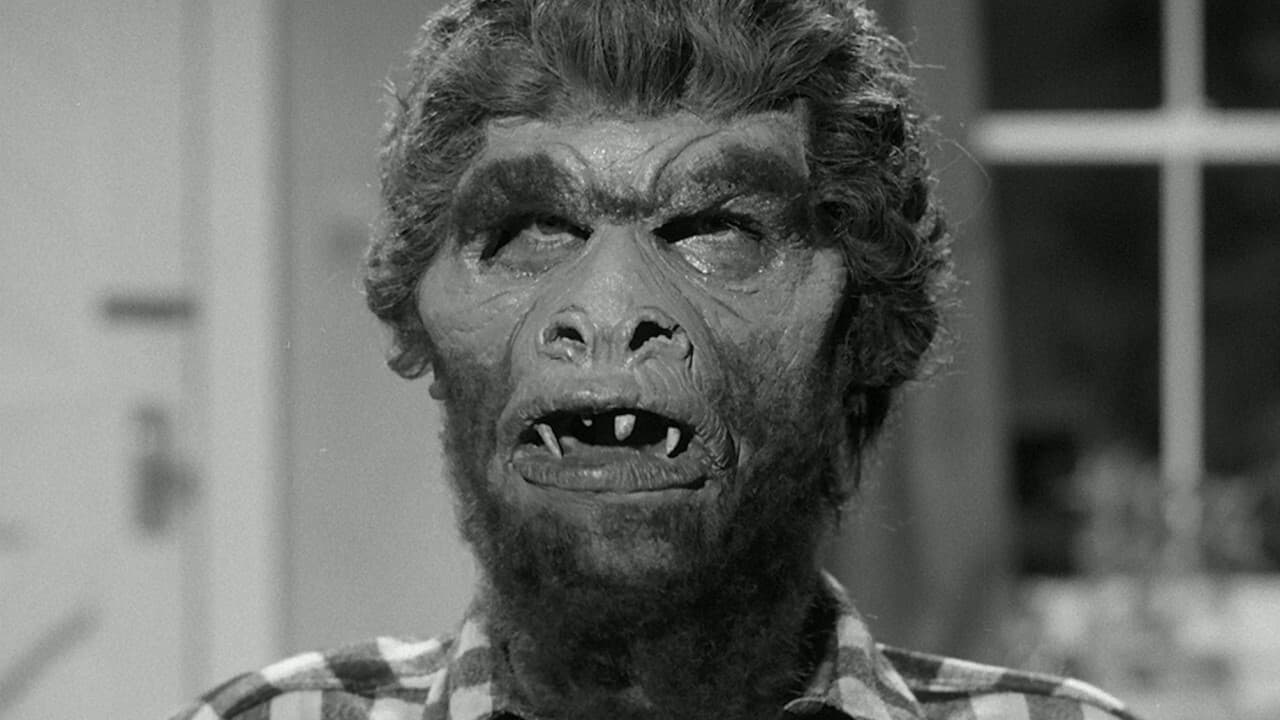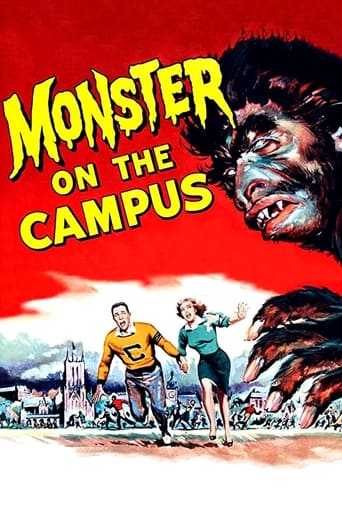

Awesome Movie
... View MoreAlthough it has its amusing moments, in eneral the plot does not convince.
... View MoreEach character in this movie — down to the smallest one — is an individual rather than a type, prone to spontaneous changes of mood and sometimes amusing outbursts of pettiness or ill humor.
... View MoreLet me be very fair here, this is not the best movie in my opinion. But, this movie is fun, it has purpose and is very enjoyable to watch.
... View MoreSome reviewers who knock this 50's SCI FI do not see it what it really is: A journey thru a fantasy world pure escapism! NOT TO BE TAKEN SERIOUSLY. But just to enjoy and escape from the REAL problems of today's world. It's NOT trying to teach a new branch of evolution or spew scientific facts galore, just an IMAGINARY story to entertain one on a journey thru a IMAGINARY WORLD!!! SO PLEASE CRITICS..JUST ENJOY IT FOR WHAT IT IS DO NOT READ INTO IT WHAT IT IS NOT!!
... View MoreIn the five-year period 1953-'57, director Jack Arnold brought forth five sci-fi/horror classics that are still beloved by psychotronic-film fans today: "It Came From Outer Space" ('53), "Creature From the Black Lagoon" ('54), "Revenge of the Creature" ('55), "Tarantula" (also '55) and one of the all-time champs, "The Incredible Shrinking Man" ('57). Following up Arnold's string of crowd-pleasing entertainments came the lesser-known "Monster on the Campus" in 1958, a picture that, as it turns out, is just as much fun as the others. In the film, we meet a likable and soft-spoken professor at fictitious Dunsfield University, in California; a biologist named Donald Blake (a name that perhaps influenced Stan Lee four years later when selecting a moniker for Thor's alter ego!). When we first encounter Blake, he is very excited about the arrival of the school's latest prize acquisition, a preserved coelacanth from the seas off Madagascar. (It should be remembered that the coelacanth, a fish believed to have gone extinct 65 million years ago, was initially caught off the coast of South Africa 20 years previous to this film, in 1938.) But problems arise when it turns out that this fish had been preserved with pesky gamma radiation, and that its blood has a tendency to revert those who touch it or drink it (or, as happens in the film, even smoke it!) to their earlier evolutionary form. Thus, before long, a prehistoric dog, a giant dragonfly and a decidedly simian maniac are all terrorizing the area around Dunsfield U...."Monster on the Campus," cheaply made as it is, is an efficient little thriller, compactly told (the whole thing clocks in at 77 minutes) and often fairly exciting. Arthur Franz is very ingratiating as Blake, and the creature that he turns into both looks and sounds pretty frightening. While some have complained about Blake's overly slow realization of his own transformations, this fact did not bother this viewer as much as the film's ending; without giving anything away, let me just say that I wish the picture could have concluded otherwise. Joanna Moore, future mother of Tatum O'Neal, is quite good as Blake's fiancée here, and displays convincingly real terror when confronted by the titular killer. The picture boasts any number of memorable scenes, my favorite being the initial appearance of that giant dragonfly as it beats against a windowpane; somehow, this sequence brought to mind the scene with the giant bugs on the supermarket windows in Frank Darabont's 2007 horror masterpiece "The Mist." Director Arnold keeps his film moving along nicely, and if the picture's FX don't match those in some of his earlier sci-fi films (especially those to be found in "The Incredible Shrinking Man"), they are nonetheless cheesily endearing; I love the look of that dragonfly in repose! In all, a wholly likable '50s sci-fi/horror outing, surely deserving of a greater renown. I would like to add here that 1958 also saw the release of another Jack Arnold sci-fi film, "The Space Children," which I have never seen, as well as the Arthur Franz sci-fi picture "The Flame Barrier," which I haven't seen since the early '60s on NYC television. Both have never appeared on either VHS or DVD and both are films that really ought to see the light of the digital day soon. Studio heads, please take note!
... View MoreA professor (Arthur Franz) of Dunston College comes into possession of a big fish, 300 million years old, long thought to be extinct. The carcass has been shot through with gamma rays as a preservative. Unknown to anyone, this has altered the fish's plasma so that any living organism that comes into contact with it, either by ingestion or inhalation, reverts to its own primitive forebear. Thus, for instance, Sampson the fraternity's dog laps up some fluid from the fish and becomes a sort of savage wolf. You can tell because when the dog growls he bears his teeth and you can see the canine's canonical canines. Bacteria crystallize like some viruses. A normal dragonfly that lights on the fish grows to immense proportions. And Franz manages unwittingly to cut his hand on the coelocanth's teeth and, later, to smoke some plasma-drenched tobacco in his pipe. (Don't ask.) And after this he becomes, well, not any kind of ancestral hominid but rather an ape-headed hairy monster whose idea of decorum is to smash furniture and tear cops limb from limb during his blackouts. The effects are very real but temporary.Nobody believes his "theory", of course, so to prove it, he deliberately injects himself with the plasma under circumstances that ensure he will be shot and killed by the police. He leaves behind a cute girl friend with a Southern accent (Joanna Moore) and a dozen or so students who are probably happy to get out of his lab periods.It's all pretty silly. The plot is full of holes, for one thing. How is Franz, a professor yet, unable to link his blackouts with the appearance of the ape-monster? The audience can figure it out right off the bat. How does a normal, healthy young woman die of fright? Why is the unit of measurement of evidence always a "shred"? Why are cops told they don't have a shred of evidence. Suppose they did have a shred. Could they then have two shreds of evidence -- or even three? Could they go to trial with half a shred? How about a nanoshred? I kind of like Arthur Franz. Square of jaw and imperturbable, he's the very model of a pedestrian actor. (He was pretty good in "The Sniper," his best picture.) Besides, he must have a great deal of determination to have worked his way out of Perth Amboy, New Jersey, a city in whose legend brick factories loom prominently.Troy Donahue, on the other hand. Well. The best performance comes from Judson Pratt (great as the frequently inebriated Sergeant Kirby in John Ford's "The Horse Soldiers"). He's everything that Donahue is not. He's animated. He has the pushed-in face and big ears of a proletarian. And not just a proletarian but a Boston proletarian, with a regional accent so thick that every vowel should have a German umlaut over it.There's nothing that comes to mind that might have saved this film from it own tedium. I liked the coelocanth, though. It was a real biological find at the time and much in the news. And linking this primitive fish to the appearance of avatars was imaginative, though I don't know what gamma rays could have had to do with it. They're just X rays and they don't preserve anything.All in all, some silly lines in the dialog aside, it's a dull movie.
... View MoreBlood of an ancient fish transforms those infected with it into a vicious dog, giant dragonfly or monstrous Neanderthal entity. Arthur Franz is very convincing as an archaeological college professor, teaching Troy Donahue and Nancy Walters, while romancing Joanna Moore. Jack Arnold ably directed this somewhat maligned film; it's actually creepy and well-shot, succeeding in delivering the shocks, especially in the last act, where we finally see the title creation and it's a startling effect. Helen Westcott is memorable in only two scenes, as the school nurse, conveying some romantic attraction to Franz, all with a dose of humor. It was recently released to DVD as part of the "Classic Sci-Fi Ultimate Collection", which includes "Tarantula" (1955), "The Mole People" (1956), "The Monolith Monsters" (1957), and "The Incredible Shrinking Man" (1957), all on par: great title sequence, fine musical score (some patchwork), beautiful monochrome photography, well-scripted, capably acted, always intriguing, with "Shrinking Man" the jewel of the crown.
... View More